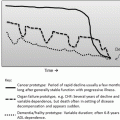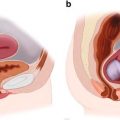Drugs commonly implicated
Drugs less commonly or rarely implicated
Typical antipsychotic agents (e.g., chlorpromazine, promazine, haloperidol, trifluoperazine, sulpiride, flupentixol, pimozide, fluphenazine)
Atypical antipsychotic agents (e.g., quetiapine, clozapine)
Calcium channel agents (e.g., diltiazem, verapamil)
Calcium channel agents (e.g., flunarizine, cinnarizine)
Antiarrhythmic agents (e.g., amiodarone)
Antidepressants (MAOI, SSRI, TCA)
Anticonvulsants (e.g. sodium valproate)
Antiemetic agents (e.g., prochlorperazine, metoclopramide)
Lithium
Atypical antipsychotic agents, particularly at higher doses (e.g., risperidone, olanzapine)
Antihypertensive agents (e.g., reserpine, a-methyldopa)
Miscellaneous: anticancer drugs (tamoxifen, thalidomide), hormones (levothyroxine, medroxyprogesterone), some of the antibiotics, antiviral and antifungal agents
In addition to DIP other agents adversely affect the central and peripheral nervous system. Especially important are the numerous medications with anticholinergic properties (Table 5.2). These agents commonly cause delirium, urinary retention, constipation, dry mouth, and blurry vision which can impact quality of life as well as functional capabilities of older adults. That is why it is important to minimize the cumulative anticholinergic burden on older adults .
Therapeutic class | High anticholinergic activity medications | Alternative approaches |
|---|---|---|
Antihistamines | Brompheniramine Carbinoxamine Chlorpheniramine Clemastine Cyproheptadine Dexchlorpheniramine Dimenhydrinate Diphenhydramine (oral) Doxylamine Hydroxyzine Meclizine Triprolidine | Intranasal normal saline Second generation antihistamine (e.g., loratadine) Intranasal steroid (e.g., beclomethasone, fluticasone) |
Antidepressants | Amitriptyline Amoxapine Clomipramine Desipramine Doxepin (>6 mg) Imipramine Nortriptyline Paroxetine Protriptyline Trimipramine | For depression: selective serotonin reuptake inhibitors (SSRI) (except paroxetine); selective norepinephrine reuptake inhibitor (SNRI), bupropion For Neuropathic Pain: SNRI, gabapentin, capasaicin topical, pregabalin, lidocaine patch |
Antimuscarinics (urinary incontinence) | Darifenacin Fesoterodine Flavoxate Oxybutynin Solifenacin Tolterodine Trospium | Mirabegron |
Antiparkinson agents | Benztropine Trihexyphenidyl | Carbidopa/levodopa |
Antipsychotics | Chlorpromazine Clozapine Loxapine Olanzapine Perphenazine Thioridazine Trifluoperazine | Second generation antipsychotics except olanzapine if clinically warranted and benefit > risks especially in dementia patients |
Antispasmodics | Atropine (excludes ophthalmic) Belladonna alkaloids Clidinium-chlordiazepoxide Dicyclomine Homatropine (excludes ophthalmic) Hyoscyamine Propantheline Scopolamine (excludes ophthalmic) | Loperamide Rifaximin |
Skeletal muscle relaxants | Cyclobenzaprine Orphenadrine | For acute mild or moderate pain: acetaminophen, nonacetylated salicylate (e.g., salsalate), propionic acid derivatives (e.g., ibuprofen, naproxen)—yet consider co-morbidities and duration of use |
Antiarrhythmic | Disopyramide | Atrial fibrillation: For rate control: nondihydropyridine CCB (e.g., diltiazem), beta blocker For rhythm control: dofetilide, flecainide, propafenone |
Antiemetic | Prochlorperazine Promethazine | Ondansetron |
5.2.3 Cardiovascular System
One age related change in the heart is a decline of the ability to respond to stress with an increasing heart rate and coronary blood flow. In part this is due to the decreased response to catecholamines (i.e., epinephrine), which is related to the diminished number or decreased sensitivity of beta-receptors in older adults [14]. This is why it is imperative to be aware of medications that reduce cardiac output (e.g., calcium blockers) or cause sodium retention (e.g., glucocorticosteroids, nonsteroidal anti-inflammatory drugs) as these could stress the myocardium causing heart failure exacerbation.
5.2.4 Gastrointestinal Tract
There are numerous age related physiological changes in the GI tract including:
Increase in gastric pH secondary to reduction in gastric acid secretion;
Decrease in splanchnic blood flow (estimated about 30–40 %);
Increase in gastric emptying time; and a decrease in gastric motility
However, there appears to be no effect of these changes on drug absorption.
5.2.5 Hepatic System
The liver is involved in the catabolism and elimination of many medications. Age related changes impacting this hepatic function include:
Decrease in the liver mass as well as blood flow impacting medications such as propranolol
Decline in metabolic reactions such as:
Hydroxylation (e.g., phenytoin)
Dealkylation (e.g., diazepam)
Sulfide oxidation (e.g., chlorpromazine)
Hydrolysis (e.g., aspirin)
While there is great variability in age related changes in hepatic metabolism among older adults, clinicians must be vigilant that age related hepatic functional decline could result in greater concentrations of drugs resulting in increased risk for adverse drug events. Furthermore, it is important to note that other factors influence hepatic metabolism such as gender (e.g., women eliminate zolpidem (drug rarely indicated in seniors) slower than men), hepatic congestion from heart failure (e.g., reduces metabolism of warfarin and increases INR), and smoking (e.g., increases clearance of theophylline as it increases monooxygenase enzymes).
5.2.6 Renal System
Age related changes in renal function must be considered carefully. The following age related changes occur variably in the kidney [11]:
Decrease in renal mass (due to number and size of intact nephrons) and blood flow;
Decrease in glomerular filtration rate as well as tubular secretion and reabsorption.
The creatinine clearance is generally used as an index of renal function in order to make appropriate adjustments for dose when using drugs primarily or significantly eliminated by the kidney. The Cockcroft and Gault equation utilizes serum creatinine measurement, age, and weight. Despite limitations, this estimate is used widely within drug handbooks to dose adjust commonly used medications such as antibiotics and anticoagulants [15]. The clinical significance has been noted with the novel oral anticoagulant agents (e.g., dabigatran, rivaroxaban) with the increased risk of bleeding when not dosed appropriately [16]. Chapter 25—Nephrology provides a detailed discussion of the assessment of renal function and managing patients with various degrees of renal failure.
5.2.7 Body Composition
Body composition changes with aging and this can potentially influence the distribution of drugs. This could be clinically significant. One additional change that is important for practitioners is the impact of stress on the aged nervous system. Change in mental status is often a warning of a more insidious disease. Often times an acute infection, electrolyte abnormality or an addition or dose change of a medication may be the underlying etiology. Such changes include:
Decrease in total body water influencing the serum and tissue concentration of medications such as digoxin;
Decrease in lean body mass;
Decrease in serum albumin which is known to bind medication such as phenytoin, valproic acid, and warfarin;
Increase in total body fat leading to an increased volume of distribution of fat-soluble medications such as sedative-hypnotics and other CNS medications.
The magnitude of these changes is heterogeneous among seniors and is not predictable. Clinicians, therefore, must be hyper-vigilant for drug side effects or drug–drug interactions in supervising the care of all seniors. In summary, age related physiological changes in all seniors place them at a variable but marked increase in risk for an adverse drug event. The clinician must thoughtfully attempt to choose the correct dosage of the correct drug for the condition recognizing the heterogeneity in the population. The general prescribing dictum of starting medications at a low doses and then titrating up slowly while monitoring closely and regularly for adverse effects is prescient.
5.2.8 Adverse Drug Events
Adverse drug events (ADEs) in seniors are very common. Thirty-six percent of identified ADEs involved elderly individuals . Twenty-eight percent of all hospitalizations for seniors were medication related: 11 % due to non-adherence and 17 % due to adverse drug events [17]. Among ambulatory older adults , each ADE adds approximately $1300 in the cost of an individual’s care [18]. The most common ADEs in seniors leading to urgent hospitalizations are gastrointestinal bleeding due to hematologic agents or gastrointestinal irritants, volume and electrolyte disturbances due to cardiovascular agents, altered mental status due to central nervous system agents, and hypoglycemia due to endocrine agents such as oral hypoglycemic agents or insulin [19].
Adverse drug events are very common but highly preventable. ADEs among older adults were serious, life threatening, or fatal in 38 %; and over 27 % of all ADEs were felt preventable. Over half of these ADEs were attributed to the lack of careful monitoring ! [20, 21].
In addition to ADEs, medication non-adherence is a significant clinical problem. The average rate of poor or non-adherence is estimated to be between 30 and 50 %, irrespective of the burden of a patient’s disease or prognosis [22]. Medication non-adherence contributed close to two-thirds of medication-associated hospitalizations in the USA [23]. In contrast, patients with high rates of medication adherence have significantly lower hospitalization rates [23]. The more complexity a patient’s medication regimen the more likely is poor on non-adherence leading to a higher risk for medication errors [24]. There are high monetary costs to society from poor or non-adherence to drugs. For example, one study showed good adherence (compared to poor adherence) to medications decreased disease-associated costs [25]. In the USA, non-adherence is estimated to cost about $100 billion a year (including hospital costs), as well as contributing to about one-tenth of total hospitalizations [22].
Emerging models of health care incorporate an interdisciplinary approach to improve medication management for older adults. Currently Medicare Part D plans (prescription coverage) offer a covered benefit for eligible beneficiaries called Medication Therapy Management (MTM) . MTM is a “patient-centric and comprehensive approach to improve medication use, reduce the risk of adverse events, and improve medication adherence.” This program was developed to minimize ADEs and poor adherence among seniors who obtain Part D coverage [26]. The MTM program is available at no cost if a patient meets three conditions: more than one chronic condition; taking several medications; and combined annual cost of medications is more than $3507 (2016).
5.3 Polypharmacy (Polymedicine)
Medication adverse events are common in polypharmacy . Polypharmacy (using five or more drugs) often results when a clinician is prescribing for a patient with multiple conditions. In that scenario, a clinician may prescribe the medications suggested in several disease specific guidelines. However, such guidelines were typically designed by specialty experts for a patient with just a single disease.
Difficulty in sorting out problems from polypharmacy is especially profound because it is often uncertain what drugs are actually being taken and what symptoms are attributable to an ADE versus the symptoms from a patient’s illnesses. There are many clinical tools and resources to combat polypharmacy and optimize prescribing. The following section highlights some of the most valuable of these.
Stay updated, free articles. Join our Telegram channel

Full access? Get Clinical Tree





